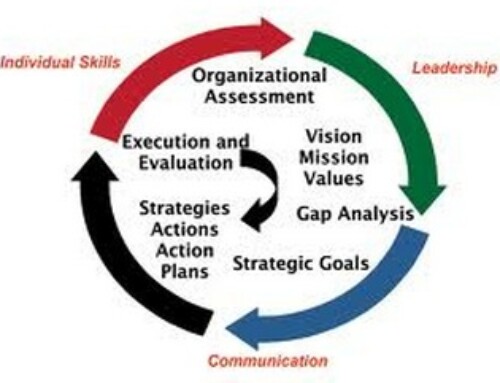 If you were in the real estate business before the days of email, you may recall the experience of driving to the local Board of REALTORS® to pick up a forms packet for a transaction. Alternatively, your brokerage may have had a forms file with every type of printed form that you might need. Simply stated, forms were printed until pioneering State Associations of REALTORS® learned to share them electronically. Today, electronic forms management is a member benefit for all Realtors® as a member benefit of The National Association of REALTORS® (NAR).
If you were in the real estate business before the days of email, you may recall the experience of driving to the local Board of REALTORS® to pick up a forms packet for a transaction. Alternatively, your brokerage may have had a forms file with every type of printed form that you might need. Simply stated, forms were printed until pioneering State Associations of REALTORS® learned to share them electronically. Today, electronic forms management is a member benefit for all Realtors® as a member benefit of The National Association of REALTORS® (NAR).
When Realtor Associations learned about this policy and product offering from the National Association of REALTORS®, they started to internalize and rethink their forms licensing program.
Why Do We Love Standard Forms?
Ages ago, and in some States of America, you had to hire a lawyer to do the documents for a real estate transaction. For the most part, this is busy work for Attorneys. In most States, licensed real estate professionals can complete forms and they are reviewed by their broker and processed by a title company.
Most States have taken on the responsibility of creating standardized forms that handle the variety of transactions encountered by most Realtors. Standard forms have all of the legal terminology needed transactions, so the agent fills out the information about the subject property and the information about the party they represent on each form, along with things like price. The standardized forms make the contracting process simple, easy and fast. The Realtor fills in the blanks, gets signatures, and its done.
Copyright is Owned by the Forms Author
The use of the word “standardized” is a little misleading when it comes to forms. Written works of any kind fall under the protections of the federal Copyright Act of 1976. According to the Act, copyright is available “in original works of authorship fixed in any tangible medium of expression, now known or later developed, from which they can be perceived, reproduced, or otherwise communicated, either directly or with the aid of a machine or device,” United States Constitution 102(a).
When you look at a form, you will notice a copyright statement on the bottom of each page. This tells you who owns the copyright. This is usually your State Association of REALTORS® who updates the forms from time to time as necessary. They invest a lot of the membership treasury in the constant evolution and publication of these forms.
Can Anyone Use These Forms?
No! Copyright holders control the use of forms. For example, in California there are around 450,000 licensed real estate agents but only about half of them are members of the California Association of REALTORS®. ONLY MEMBERS OF THE CALIFORNIA ASSOCIATION OF REALTORS HAVE THE LICENSE TO USE THE COPYWRITTEN FORMS. And, this is true of most Associations. A Realtor cannot convey the form to anyone for any purpose.
Forms Cannot Be Used In Transaction Management Systems Without a Copyright Liense.
DotLoop, Skyslope, DocuSign, and Instanet are good examples of Transaction Management Systems. Certainly there are more. A user can load a completed digital copy of the completed standardized forms into these systems.
WITHOUT PERMISSION FROM THE COPYRIGHT OWNER, YOU CANNOT LOAD A BLANK FORM INTO A TRANSACRTION MANAGEMENT SOLUTION AND ALTER IT. You may recall that the California Association of REALTORS® sent a cease and desist letter to DotLoop because they developed a library of blank forms owned by the California Association of REALTORS® without asking for a forms license. After much discussion, DotLoop learned that they must get a forms license before putting copyrighted forms into their application.
If you are a real estate broker using a transaction management solution, consult with your copyright owner (usually your MLS or AoR to get permission first).
Association Forms Licensing
For the NAR to be able to offer zipLogix® as a member benefit, they had to get permission to license the forms from the local Association first. If you visit the press release page on zipLogic’s website, you will see a list of Associations who are participating in the program – albeit piecemeal – https://ziplogix.com/press/press-releases/ Remember, zipLogix is a technology company that developed zipForms® solution for forms management. zipLogix is a for profit company that just happens to be owed by Real Estate Business Solutions (REBS), a for profit business that is wholly owned by the California Association of REALTORS®. They are the vendor to NAR for the forms solution. NAR could have just as easily partnered with another technology company like DotLoop, Instanet, or others to provide this member benefit. In the end (and probably influenced by the popularity of the product and their investment in the company), they chose zipForms and zipForms is meeting with the copyright owners of real estate forms to secure the permission for REALTORS® to access this NAR Member Benefit.
Can All REALTORS® use zipLogix?
Sure. If you are a member of the National Association of REALTORS®, you can use the technology platform. However, without an agreement between NAR and your State or Local Association, you may not be able to do much more than store a digital copy of a completed form in zipForms.
What Are Smart Forms?
When you are preparing documents for a real estate transaction, you typically chose the forms you need from a forms library. If they are dumb forms, you would need to fill in the blanks of every field on every document. A smart form solution will hydrate all of your documents from a single data point. For example, if your forms are smart, you can pull the property data you need from the MLS (search and select), and it will fill in the property details on all of the forms you have selected for your transaction. If it’s a new listing, it may fill in the details from a public record data feed. Your customer information can be completed once and it will populate all of the documents that need the customer information, etc.
Smart forms are so good at avoiding typographical errors that they can sometimes save on the cost of E&O insurance. As the name “smart forms” suggests, fields can be designated as optional or required. This limits the opportunity for omissions too.
Guess what – to make forms smart (access to MLS data), you also need a license. Like forms, the MLS data is also subject to copyright data. Again – you need permission.
Associations Driving Innovation
Associations have a grand opportunity to drive revenue and inspire innovation through forms licensing. A great example of this is the Texas Association of REALTORS® who routinely, but carefully, provides technology company with a license to use their copyrighted forms.
This is an exciting model that will allow Realtors to use any solution they like.
Associations must not only license their forms and possibly MLS data to the forms provider, but they must also license access to the membership roster. Remember, not all licensed agents are Realtors – so they do not necessarily get to use the forms management solution. The good news here is that technology can easily verify that a user is authorized to access and use the forms.
Conclusions
We congratulate the National Association of REALTORS® and their partner ZipLogix® on their incredible product and success. They have opened the door to forms licensing, which is a very positive movement for our industry. However, there is much more to be done. All Associations and MLSs who have copyrighted forms should contemplate sound forms licensing policy that encourages technology firms to innovate and for brokers and agents to have selective choice around the applications. It will resolve problems that exist in our industry today that are severely crippling many brokerages and agents.
Problems Solved
Did you know that some franchise organizations require a copy of every transaction must be submitted though DotLoop as part of the franchise agreement? That means that deals need to be taken from zipLogix or Instanet or whatever TM solution is offered from the AOR or MLS and put it into DotLoop to be forwarded to their franchise.
Did you know that many brokers have multiple forms management solutions in their business because they need to use the one chosen by their board or MLS (Association or MLS refused to license the forms to their members and subscribers)? Many brokers are using zipLogix or Instanet for forms, then manually dropping completed forms into their transaction management system for everything else? It causes massive redundancy and undermines the seamless experience that brokers are trying to deliver to their agents and consumers.
It is never the intent of forms licensing policy if the MLS or Association to restrict usage by the very customer they seek to protect. However, sometimes the goal of protecting and serving winds up causing pain the very customer they are there to support. Sound forms licensing creates an open environment for technology forms to innovate and for copyright holders to protect their intellectual property.





In California, the number of licensees is closer to 450,000 and nearly 200,000 are Realtor members.